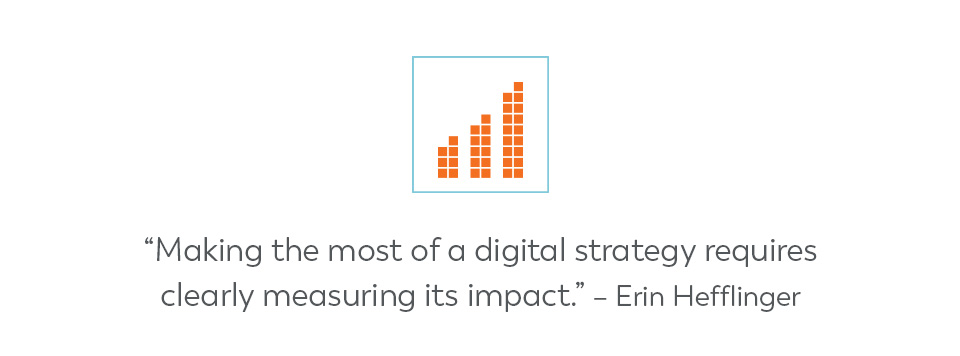Measuring Performance of Your Social Media Efforts
There’s no denying the power of social media. Worldwide, more than 3.6 billion people use social media, and that number is projected to continue increasing exponentially. People use social media networks to keep up with the latest news, connect with friends and family, and engage with brands.
During the pandemic, social media use skyrocketed. According to Nielsen, use of mobile devices to access current events and global news in March 2020 was up 215% from the previous year. From the early days of the COVID-19 outbreak, we’ve seen healthcare providers, including home care, assisted living, hospice and palliative care, utilize social media to reach and connect with family caregivers.
Throughout the past several months, we’ve been exploring all facets of effective social media in our series, “Avoid the 7 Deadly Sins of Social Media.” We approached the series from a what not to do perspective and offered strategic insights to help senior care agencies take their social media efforts to the next level. Topics we’ve covered include planning, selecting the right platforms, types of content that resonate with your target audience, visual storytelling and more.
In this post, we’ll examine ways to monitor the performance of your social media efforts. While the author of this quote is unknown, the message is spot on. “However beautiful the strategy, you should occasionally look at the results.”

Measuring social media performance
Don’t assume your social media efforts are effective just because you post content regularly. To measure performance of your social media efforts, first look back at the goals and objectives you laid out in your plan. What are you trying to accomplish through your social media presence? Do you want to increase awareness of your agency? Increase engagement with your posts? Drive traffic to your website? Take your goals and objectives and establish key performance metrics you’ll track on a monthly basis.
Organic social media metrics
To track the performance of your social media posts, first look at engagement metrics, such as likes, comments and shares. These engagement metrics will also help you to see the content that resonates with your followers. Keep feeding the highest performing content to your followers. For example, if you find that posts with tips and resources for caregivers get higher levels of likes, comments and shares, incorporate more information like this in your content plan.
Take your engagement metrics to the next level by calculating the engagement rate. According to Hootsuite, “Engagement rate is the number of engagement actions (e.g., likes, shares, comments) a post receives relative to your total number of followers.”
Monitor your audience growth rate. How many followers are you gaining month over month?
If you have a goal to drive traffic to your website, you should be including links to resources on your website in your posts. Look at Google Analytics to see how much traffic you’re getting to your website from your social media channels.
Another important metric is conversions. For posts with a call to action, such as signing up for a newsletter, downloading a caregiver guide or registering for an event, track the number of people who clicked on the link in your post and completed the action.
Paid social media metrics
If your digital advertising includes advertising on social media channels, there are additional metrics to monitor on a monthly basis. Transcend’s digital expert, Erin Hefflinger, offers her perspective on key metrics to track.
“Making the most of a digital strategy requires clearly measuring its impact. But sometimes, metrics and KPIs can seem like ambiguous numbers if you don’t understand what they’re telling you,” she said.

Two important metrics to track are the numbers of impressions and clicks on your ad. The relationship between the two, total impressions compared to the number of clicks, is the click-through-rate (CTR). This number is the percentage of people clicking through to your website.
Another important metric is cost-per-click (CPC). This represents the cost for every click on your ad. How much you’re willing to spend depends on the value your organization puts toward acquiring a new customer. CPC will vary based on competition and tactic. A click on a Google search ad comes at a higher cost than a click on a display ad. Many companies are competing to appear as one of the top three ads in a Google search result.
After someone clicks on an ad and lands on your website, you can track their activity, such as pages viewed and time spent on your website. Similar to organic posts, you’ll also want to track conversions, or actions taken. As noted above, an action might be a download of a resource or completing an online form.
Metrics vary greatly depending on industry, competition and market. Overall ad budget, ad creative and landing page experience also contribute to varying levels of engagement. To help provide guidance and context, Wordstream shares Facebook ad benchmarks by industry. Healthcare advertisers could expect an average CTR of 0.83% and an average CPC of $1.32. Keeping in mind the many factors that impact CTR and CPC, use these benchmarks for directional guidance. For home health or senior care campaigns specifically, it is better to benchmark against yourself and try to achieve steady growth in number of clicks and meaningful conversions.
Creating a comprehensive social media strategy that addresses the points we laid out as the “7 deadly sins” will set up your agency for success in reaching and engaging your target audience. Transcend can help you create sound social media strategy that maximizes your budget and drives results. To learn more how we can help you, email me at emily@transcend-strategy.com.










